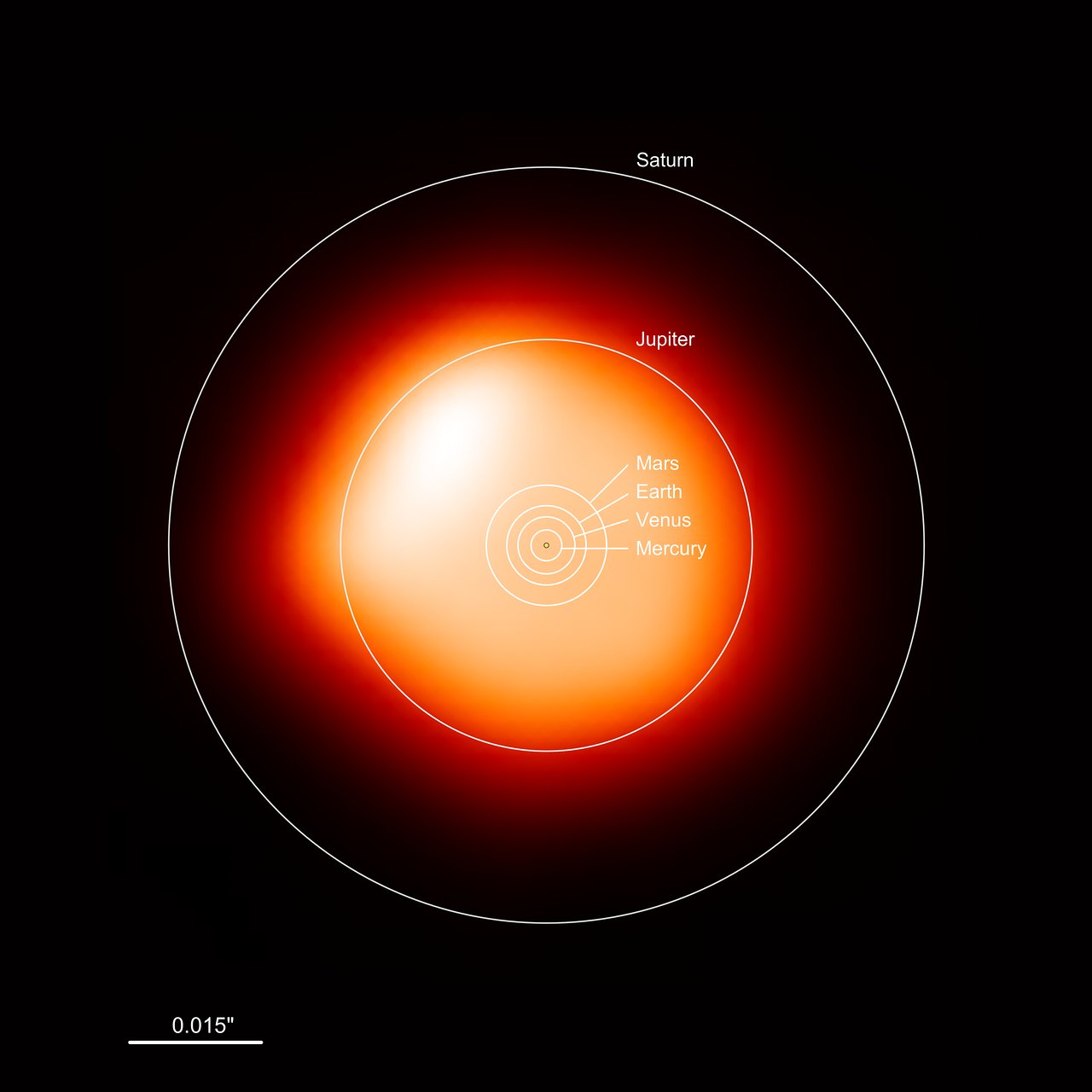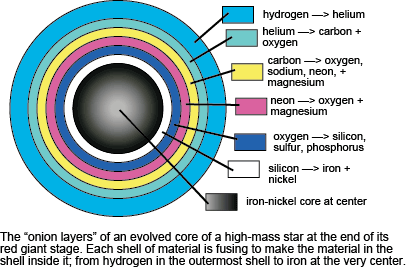
All through the long main sequence stage, the relentless compression of gravity is balanced by the outward pressure from the nuclear fusion reactions in the core. Eventually the hydrogen in the core is all converted to helium and the nuclear reactions stop. Gravity takes over and the core shrinks. The layers outside the core collapse too, the ones closer to the center collapse quicker than the ones near the surface. As the layers collapses, the gas compresses and heats up.
Eventually, the layer just outside the core called the "shell layer" gets hot and dense enough for fusion to start. The fusion in the layer just outside the core is called shell burning. This fusion is very rapid because the shell layer is still compressing and increasing in temperature. The luminosity of the star increases from its main sequence value. The gas envelope surrounding the core puffs outward under the action of the extra outward pressure. As the star begins to expand it becomes a subgiant and then a red giant.

At the bloated out surface, the increased amount of energy is spread out over a larger area so each square centimeter will be cooler. The surface will have a red color because it is so cool and it will be much further from the center than during the main sequence. Despite its cooler surface temperature, the red giant is very luminous because of its huge surface area. When the Sun becomes a red giant, Mercury and Venus will be swallowed up by the Sun and perhaps the Earth will too. Even if the Earth is not swallowed up, conditions on its surface will become impossible for life to exist. The Sun's increased luminosity will heat the Earth's surface so much that the water oceans and atmosphere will evaporate away. Massive main sequence stars will expand much further to become supergiants. Betelgeuse, the bright red star in the top left corner of the Orion constellation, is an example of a supergiant star. If placed at the center of our solar system, all of the planets out to Jupiter would be inside Betelgeuse. A few supergiants are even larger than Betelgeuse!
 --
-- 
Red giants can have strong "winds" that dispel more mass than all of the stellar winds that occurred during the long main sequence stage. However, most of the star's mass will be lost in the "last gasp" stage (planetary nebula or supernova) described below. All through the star's life after it first started nuclear reactions, it has been losing mass as it converted some mass to energy and other mass was lost in the winds. This means that even though a red giant is large in terms of linear size, it is less massive than the main sequence star it came from. A red giant has the extremes in temperature and density: its surface is cold and very low density, while its core is very hot and extremely dense.
If the star is massive enough, gravity can compress the core enough to create high enough temperatures, 100 million K, to start fusing helium, or temperatures of billions of Kelvin to fuse heavier elements if it is repeating this stage. In low mass stars (like the Sun), the onset of helium fusion can be very rapid, producing a burst of energy called a helium flash. Eventually the reaction rate settles down. Fusion in the core during this stage releases more energy/second than the core fusion of the main sequence stage, so the star is bigger, but stable! Hydrostatic equilibrium is restored until the core fuel runs out.
Stars entering and leaving this stage can create conditions in their interiors that trap their radiated energy in their outer layers. The outward thermal pressure increases enough to expand the outer layers of the star. The trapped energy is able to escape when the outer layers are expanded and the thermal pressure drops. Gravity takes over and the star shrinks, but it shrinks beyond the equilibrium point. The energy becomes trapped again and the cycle continues.
In ordinary stars hydrostatic equilibrium works to dampen (diminish) the pulsations. But stars entering and leaving stage 6 can briefly (in terms of star lifetimes!) create conditions where the pressure and gravity are out of sync and the pulsations continue for a time. The larger, more luminous stars will pulsate with longer periods than the smaller, fainter stars because gravity takes longer to pull the more extended outer layers of the larger stars back. The period-luminosity relation can be used to determine the distances of these luminous stars from the inverse square law of light brightness. Stars of this type are called Cepheid variables, a very important kind of star for setting the scale of the universe, discussed in the Milky Way chapter.
This picture of NGC 3603 from the Hubble Space Telescope (courtesy of Space Telescope Science Institute) captures the life cycle of stars in a single view. From lower right to upper left you see: dark clouds and a giant gaseous pillar with embryo stars at the tip to circumstellar disks around young stars to main sequence stars in a cluster at center to a supergiant with a ring and bipolar outflow at upper left of center near the end of the life cycle.
When the core fuel runs out again, the core resumes its collapse. If the star is massive enough, it will repeat stage 5. The number of times a star can cycle through stages 5 to 6 to 7 depends on the mass of the star. Each time through the cycle, the star creates new heavier elements in its core (stage 6) from the ash of fusion reactions in the previous cycle. This creation of heavier elements from lighter elements is called stellar nucleosynthesis. For the most massive stars, this continues up to the production of iron in the core. Stars like our Sun will synthesize elements only up to carbon and oxygen in their cores. Each repeat of stages 5 to 6 to 7 occurs over a shorter time period than the previous repeat. Carbon fusion occurs at about 600 million K, Neon fusion occurs at about 1.2 billion K, Oxygen fusion occurs at about 1.5 billion K, and Silicon fusion occurs at about 2.7 billion K.

Up to the production of iron in the most massive stars, the nuclear fusion process is able to create extra energy from the fusion of lighter nuclei. But the fusion of iron nuclei absorbs energy. The iron core forms in just the last year of the supergiant stage. The core of the massive stars implodes and the density gets so great that protons and electrons are combined to form neutrons + neutrinos and the outer layers are ejected in a huge supernova explosion. The more common low-mass stars will have a gentler death, forming a planetary nebula.
![]() Go back to previous section --
Go back to previous section --
![]() Go to next section
Go to next section
last updated: June 24, 2022